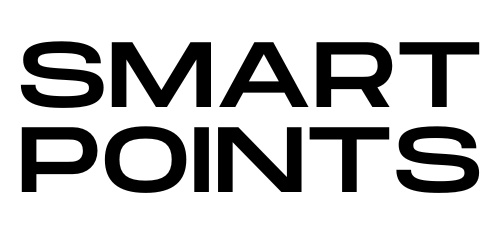Overview
So you want to start traveling using points and miles? You’re in the right place.
In this comprehensive guide on how to travel on points and miles, we’ll show you how to leverage different airline, credit card, and hotel currencies to travel for free (or at least a heck of a lot cheaper). From the outside, it can seem complicated, and that’s why so few people take full advantage of the opportunities points and miles can afford them. But by simply being here, you’re taking a huge step towards an elite group of travelers with the world at their feet.
If you haven’t already, subscribe to our bi-weekly travel tips newsletter, Smart Points, where travel expert Steven will inundate you with the latest news and strategies—he’s made all the mistakes, so you don’t have to. Even better, sign up for our Smart Points course, so you can become an expert yourself.
But without further ado, let’s dive into our guide to traveling with points and miles this year.
Where to start with points and miles
1. Be honest with yourself
Before you take your first steps forward into the world of points and miles, you need to take a few back and look at yourself.
Seems like strange advice, right?
But it’s critical to remember you’re not playing with Monopoly money. Earning points and miles requires opening and using credit cards. This carries an inherent financial risk, where poor decisions and inexperience can lead you down a dark path.
To be effective, you need to have a strong credit score, pay off your credit cards every month, and never, ever, ever spend more than you can afford. If this isn’t you yet, wait a little while longer. Your time will come. No amount of free travel is worth plunging into debt. In fact, it’s not free travel at all.
If, however, you’re in a good place, read on and get ready to change your travel experience
2. Define your travel goals
Just because you’re ready to get rolling doesn’t mean you get to skip the self-analysis. Being an effective points and miles user requires strategy, and a plan is worth nothing without a clearly defined end goal.
Everyone has different perceptions of travel. Smart Points writer Steven travels full time, jumping from country to country each month. One of our other writers, Alexa, has her eye on frequent luxury travel. Both of those lifestyles require different strategies.
For someone like Steven, a first-class seat is less important. He wants to fly as much as possible for the least amount of money. Alexa may fly less, but she wants to do so in style before staying in a world-class hotel.
Before making any decisions, narrow down what you need. Are you aiming to cover flights and hotels for one big trip at the end of the year? Or are you hoping to cover flights for two or three shorter adventures across a more extended period? Does luxury matter to you? Does volume play a factor? Do you prefer certain airlines? Are you set on a single destination?
Write down everything you can about what you need. It’s what will dictate your next move. Now that you’ve defined your goals, we can dive into the nitty-gritty.
What are travel points and miles?
In short, points and miles are currencies created by airlines, hotels, and credit cards to be redeemed by customers for travel (or other products).
Just like traditional currencies, their values vary and fluctuate often. Many are set at around 1 cent a piece, but, as you’ll discover later, they can be worth far more in certain exploitable situations.
1. Airline miles
As the name suggests, airline miles are currencies tied to a particular airline. Virtually every carrier has its own version, which can be redeemed for flights with said airline or one of its partners.
Some examples are Delta SkyMiles, British Airways Avios, United MileagePlus, and American Airlines AAdvantage Miles. Don’t get too hung up on whether a currency is named points or miles—they’re generally interchangeable.
You can earn points and miles in many different ways. The most straightforward is flying with the airline. The more you fly (and pay) with a given airline, the more points you earn. Of course, this may only be one or two flights a year for the average person, limiting earnings. A regular business traveler can earn hundreds of thousands.
The best way for most of us to earn airline points and miles is by using credit cards. Most airlines have co-branded cards that allow you to earn rewards currency by using the card. Many cards come with bonus spending categories that gift extra points for using the card to purchase specific things like groceries, restaurants, or flights with the airline. We’ll dig into credit card strategy later on.
One of our favorite cards for earning miles is the Capital One Venture Rewards Credit Card. With a large welcome bonus, simple-to-understand points-earning opportunities, a low annual fee, and versatile redemption options, it should be a staple in your wallet.
- Best for: Travelers who want to keep it simple
Capital One Venture Rewards Credit Card
75,000 Bonus Miles
Offer Details:
Earn 75,000 bonus miles once you spend $4,000 on purchases within the first 3 months from account opening - that’s equal to $750 in travel
Why we like it
The Capital One Venture is an excellent go-to card for any traveler, thanks to its easy to navigate 2 miles per dollar on every purchase. With no bonus categories to consider, a reasonable $95 annual fee, and a strong intro offer worth at least $750 in travel rewards.
Reward details
5 Miles per dollar on hotels, vacation rentals, and rental cars booked through Capital One Travel
2 Miles per dollar on every purchase, every day
Pros & Cons
Pros
-
The Capital One Venture’s current intro bonus is worth $750 when spent on Capital One’s (recently revamped) travel portal or you can use your miles to cover your recent purchases.
-
A steady 2 miles per dollar on all purchases makes earning simple and lucrative. You’ll also grab 5 miles per dollar when booking through Capital One’s travel portal.
-
Its $95 annual fee is almost negligible, especially if the intro bonus is achieved.
-
Flexible miles allow for a wide array of redemption options.
-
You can enjoy two free visits to a Capital One Lounge each year.
Cons
-
Capital One lacks US-based airline and hotel transfer partners.
-
Not many major perks beyond its miles value.
Terms Apply
2. Hotel points
Hotel brands also have their own currencies. Companies like Hilton, Marriott, and Hyatt all have individual systems and operate similarly to airlines, rewarding customers for stays at branded properties or using co-branded credit cards, like the Hilton Honors American Express Surpass® Card.
Of course, hotel currencies can be redeemed for stays instead of paying for flights. Depending on the hotel, the same amount of points could pay for multiple nights at a lower-end hotel or one night at a high-end property.
Generally, hotel points achieve less value than airline miles. But that doesn’t mean they’re not useful—far from it.
- Best for: Free Hilton Stays
- Annual Fee: $0 for the first year, then $150
- APR: 20.24%-29.24% Variable
- Reward Rate: 3X - 12X
- Recommended Credit: Good to Excellent
Hilton Honors American Express Surpass® Card
130,000 Hilton Honors Bonus Points
Offer Details:
Earn 130,000 Hilton Honors Bonus Points after you spend $3,000 in purchases on the Card in the first 6 months of Card Membership. Offer Ends 8/13/2025.
Why we like it
The Hilton Honors American Express Surpass® Card is an excellent hotel card, with a strong intro bonus of 130,000 Hilton Honors bonus points after you spend $3,000 in purchases on the card in your first six months of card membership. It’s worth having this card even for a couple of stays a year, as the $150 annual fee is already validated by the free breakfast and strong points earnings. If free Hilton nights is the goal, its earning potential is stellar, with 4X points for each dollar on U.S. online retail purchases, and 3X points for all other eligible purchases on your card.
Reward details
12X Hilton Honors Bonus Points for each dollar of eligible purchases charged on your card directly with a hotel or resort within the Hilton portfolio.
6X Points for each dollar of purchases on your Card at U.S. restaurants, at U.S. supermarkets, and at U.S. gas stations.
4X Points for each dollar on U.S. Online Retail Purchases.
3X Points for all other eligible purchases on your Card.
Pros & Cons
Pros
-
Strong 130,000-point intro bonus, which could translate to multiple free nights or one night in a luxury property in some places
-
Get up to $50 in statement credits each quarter for purchases made directly with a property in the Hilton portfolio on your Hilton Honors American Express Surpass® Card. That’s up to $200 in statement credits annually.
-
Get complimentary Hilton Honors Gold status. This entitles the cardholder to room upgrades if available, free breakfast, 80% bonus points on Hilton spends, and fifth night free on an award stay. It’s more than worth the annual fee.
-
Strong spending categories on popular purchases like U.S. supermarkets, U.S. gas stations, and U.S. restaurants
-
Free Night Reward from Hilton Honors after you spend $15,000 on eligible purchases on your card in a calendar year
-
Enjoy complimentary Hilton Honors(TM) Gold Status
Cons
-
No automatic free anniversary nights
-
You’ll need a lot of Hilton points to redeem for a free night at a luxury property
-
$150 annual fee, but it is waived the first year
3. Transferable credit card points
By far, the most valuable points are those earned on general travel cards. Instead of being tied to a singular entity, these points currencies can be transferred to a number of different partners. American Express, for example, has 18 airline partners and three hotel partners, including British Airways, Delta, Hilton, and Marriott.
This flexibility is what makes these points so valuable. Instead of being tied to one carrier and its prices, transferable points allow the customer to shop around and deposit points into the airline or hotel account that offers the best value for that specific situation.
Cards like The Platinum Card® from American Express, the Chase Sapphire Preferred® Card, and Capital One Venture X Rewards Credit Card all use transferable points currencies. These kinds of cards are the key to traveling like a pro. We’ll show you how to use them soon.
- Best for: Beginner Travelers
Chase Sapphire Preferred® Card
75,000 Bonus Points
Offer Details:
Earn 75,000 bonus points after you spend $5,000 on purchases in the first 3 months from account opening.
Why we like it
The Chase Sapphire Preferred Card is the ultimate all-around travel credit card—it fits perfectly into almost any points-earner’s wallet. Points novices can enjoy a significant intro bonus and easy to grasp spending categories with an approachable annual fee. The more experienced can utilize its high value earning potential as a secondary card and also gain access to Chase’s strong travel booking portal.
Reward details
5x on travel purchased through Chase Travel℠.
3x on dining, select streaming services and online groceries.
2x on all other travel purchases.
1x on all other purchases.
Pros & Cons
Pros
The $50 dollar hotel credit for stays purchased on the Chase Travel Portal already cuts the already approachable $95 annual fee significantly.
10% anniversary points boost – each account anniversary you’ll earn bonus points equal to 10% of your total purchases made the previous year.
Complimentary DashPass which unlocks $0 delivery fees & lower service fees for a min. of one year when you activate by 12/31/27. Plus, a $10 promo each month on non-restaurant orders.
Along with all of the above, cardholders also have access to a string of travel protections like rental coverage, cancellation insurance, and purchase protection.
Cons
It’s subject to Chase’s 5/24 rule. So, if you’ve opened five cards in the last two years, you’re most likely not going to be accepted.
Competing cards like the Capital One Venture have a better earning rate for non-bonus spend.
Chase has a once-per-lifetime rule for sign-up bonuses on their Sapphire cards, including the Sapphire Preferred, Sapphire Reserve, and Sapphire Reserve for Business. So, once you’ve earned a welcome bonus on any of these cards, you’ll never be eligible for the bonus again on the same card.
Terms Apply
4. Loyalty points
One of the most confusing facets of loyalty programs is the similar names of companies’ loyalty systems and reward currencies. Airlines and hotels typically have two sets of earnings available—one can be redeemed for travel, while the other unlocks benefits.
For example, Delta’s points currency is SkyMiles. This is what customers use to redeem flights with the airline. But its loyalty members also collect “Medallions” or “Medallion Status.”
Becoming a gold, silver, diamond, or platinum Medallion member is achieved by regularly flying with the airline (or opening certain co-branded cards), but this can’t be redeemed for flights. Instead, these define elite members of the SkyMiles program. Higher-tier members receive perks like lounge access, free upgrades, early boarding, and increased earning opportunities.
These are all great benefits, but it’s important to remember you’re mainly gaining experiential value. Chasing elite status for the sake of it is usually costly and not a tenet of traveling like a pro.
The best travel points and miles programs
The best airline reward programs
There is a level of subjectivity to what makes an airline or hotel reward program useful. A customer’s location, airline preference, and travel needs vary, impacting the perceived value of any given points or miles system.
But some programs are objectively more valuable than others. Here are some of the best programs and a brief overview of why they’re helpful. Remember, just because you’re using an airline’s currency doesn’t mean you must fly with that airline.
1. Alaska Airlines Mileage Plan
This plan is widely regarded as the most valuable points currency out there, partly due to its considerable number of partners. With 23 other airlines to earn and redeem Mileage Plan Miles with, the scope is enormous. It’s also got some super high-value flight redemptions. The only downside is its lack of transferability from major credit cards.
2. British Airways Avios
While Avios are most associated with British Airways, it’s also the points currency for Qatar Airways, Aer Lingus, and Iberia. Points can be moved back and forth between any of these airlines, which is hugely valuable. Aside from that, it’s easy to earn Avios, as American Express, Capital One, Chase, and Bilt are all transfer partners. For redemptions, using British Airways has some fantastic sweet spots on short-haul flights in the US using American Airlines.
3. United MileagePlus
United’s points system has been devalued in recent years, but it still has a ton of outstanding redemptions thanks to its long list of alliance partners. Throw in some of its interesting perks like “The Excursionist,” which basically includes a free flight, and its value increases further. Availability is usually good, too, which can’t be said for every program. Chase cards like the Sapphire Preferred allow you to transfer points to a United account, making earning easy.
4. American AAdvantage Miles
AAdvantage Miles are among the most problematic travel currencies to earn, as they don’t allow transfers from any general travel cards. The best way to earn them is through a co-branded card or flying directly with the airline or a partner. Despite these issues, it offers some outstanding value redemptions for routes to the Middle East and Asia. Its off-peak offers for Europe remain some of the sweetest spots for transatlantic travel.
5. Delta SkyMiles
Delta’s points currency is a tough one to deal with. On the one hand, its fluid value system means some reward rates are astronomical. On the other, its SkyDeals are some of the best redemptions out there when you can get them. If you enjoy flying Delta, it’s better to have points in an Amex account that can transfer to Delta. Otherwise, Virgin and KLM/Air France both allow customers to redeem their own points for Delta flights at far cheaper rates.
6. Southwest Rapid Rewards
Popular airline Southwest’s Rapid Rewards system operates differently from the others mentioned. Instead of using a rewards chart or being able to book other airlines using its points, it simply ties its currency to real-time cash prices. In short, the more expensive a flight, the more points you need. This makes it easy to use the points but remains limited in scope. Still, it’s a handy currency to have stocked up for last-minute domestic or Caribbean travel.
7. Virgin Atlantic
Setting itself up as one of the easiest rewards currencies to transfer and redeem, you can use Virgin points on over 20 partner airlines and transfer in from multiple general travel cards. Its partner redemption chart is distance based, offering some spectacular rates on airlines like Delta. Its transatlantic flights on Delta are among the best sweet spots in the points and miles game.
8. KLM/Air France Flying Blue
Flying Blue is a combined rewards program for Dutch carrier KLM and Air France (from France, obviously). It’s possible to transfer points from American Express, Chase, Capital One, Marriott, and Bilt, making it easy to earn. It regularly has the best deals on SkyTeam flights (including Delta), so always make them the first check if you’re a Delta loyalist. Bookmark the Flying Blue Promo awards—monthly deals that offer the best value at any one time.
The best hotel reward programs
On the other end of the smart traveling spectrum are the hotel rewards programs. Operating in much the same way as the airlines, members of each program can earn and redeem points for hotel stays.
Hotel programs, as a whole, offer less value than airlines in mathematical terms. Simply put, you’ll usually enjoy more cents per point when redeeming for flights. But, when lounging by the pool in a five-star hotel you didn’t pay cash for, it’s hard to feel that difference.
As with airlines, brands have their own redemption rates, perks, and earning opportunities. Here are a few of the most popular.
1. Hilton Honors
With a massive footprint, Hilton properties are found worldwide, making it a useful currency by pure convenience. Redemptions vary from as low as 10,000 points a night in small markets to over 100,000 points for luxury properties. Its fifth night free on reward stays is one way to maximize value. You can transfer points to Hilton from American Express at 1:2.
2. Marriott Bonvoy
As the largest hotel brand in the world, Marriott also has huge availability across the world—somewhere in the realm of 1.5 million rooms. It also has a fifth-night free perk which adds enormous value. You can transfer points to your Bonvoy account from American Express or Chase. You can also transfer points out of your account to Alaska Airlines—valuable in itself.
3. World of Hyatt
While Hyatt is miles behind the likes of Hilton and Marriott in terms of size, it has the best value awards program. Room redemptions are far cheaper than its competitors, and its member perks are outstanding. The only downside is the comparatively small number of hotels.
4. Wyndham Rewards
Wyndham’s program slots into an interesting hole in the market—smaller cities in the states. It’s unlikely to be your go-to for a Maldives break, but it can offer tremendous value if you’re a regular domestic traveler or business road warrior.
5. IHG One
Despite being a significant player in the hotel industry, IHG’s rewards program is comparatively weak. It has improved, but dynamic pricing means most redemptions aren’t phenomenal value. It has added a fourth-night-free perk, which is better than Hilton and Marriott’s offer, and fits the bill for loyalists to the brand.
Navigator Tip
Consider diversifying your points portfolio. While it’s tempting to focus solely on one airline or hotel rewards program, diversifying your points portfolio can offer significant benefits. By spreading your loyalty across different programs, you can maximize your options and capitalize on the unique advantages of each program.
How to earn travel points and miles
Now for the important parts: how to earn and, eventually, use points and miles.
As alluded to earlier, understanding your travel preferences is critical. Those preferences dictate the points you should collect and how you earn them. We’ll break down individual processes in another article, so for now, we’ll dissect the main ways to earn.
If you’re serious about earning free travel, you’ll make this your financial mantra: No dollar spent without maximum points return.
1. Credit card bonuses
Credit card bonuses are the bread and butter to travel like a pro. No other method allows us to earn so much in such a short amount of time. You can use airline and hotel co-branded cards or transferable general travel credit cards to do this, but the latter are more valuable.
Credit card companies offer introductory points bonuses as an incentive for customers. It encourages them to a) open a card and b) keep using it. Remember, credit cards make money from annual fees and vendor fees every time a card is used. They want you to use the card and will reward you for doing so.
The introductory fees are usually large sums of points awarded to a cardholder after spending a specified amount of money within a period of time. It’s vital never to open a card with a spending threshold you can’t responsibly pass. Your value diminishes with every interest fee and debt you dig yourself into.
As an example, the American Express® Gold Card currently has an as high as 100,000-point intro bonus. A cardholder must spend $6,000 within six months of opening the card to achieve that bonus. The 100,000 Amex points are worth around $1,600 in travel, making that a massive return on your spending.
Before opening a card for the intro bonus, ensure it’s with an airline you can use to reach your destination. For example, the Amex Gold bonus could be transferred to Virgin Atlantic. With those points, you could book a Delta flight to Europe.
Don’t make the mistake of opening a Southwest card hoping to fly to Tokyo. You can’t transfer those points, and Southwest doesn’t fly there. Always check back to your initial travel goals.
- Best for: Foodies
American Express® Gold Card
Earn as high as 100,000 Membership Rewards® Points
Offer Details:
You may be eligible for as high as 100,000 Membership Rewards® Points after you spend $6,000 in eligible purchases on your new Card in your first 6 months of Card Membership. Welcome offers vary and you may not be eligible for an offer. Apply to know if you’re approved and find out your exact welcome offer amount – all with no credit score impact. If you’re approved and choose to accept the Card, your score may be impacted.
Why we like it
The American Express® Gold Card takes your dining and grocery spending to the next level, offering an impressive 4X Membership Rewards® points per dollar spent on purchases at restaurants worldwide, on up to $50,000 in purchases per calendar year, then 1X points for the rest of the year, and 4X Membership Rewards® points per dollar spent at U.S. supermarkets, on up to $25,000 in purchases per calendar year, then 1X points for the rest of the year.
To put this into perspective, if you spend $8,400 annually on dining and groceries, which aligns with the average American’s spending, you could earn enough points for a roundtrip flight to Hawaii. Meanwhile, the bonus alone is worth over $1,000, adding significant value to your everyday spending.
Reward details
4X Membership Rewards® points per dollar spent on purchases at restaurants worldwide, on up to $50,000 in purchases per calendar year, then 1X points for the rest of the year.
4X Membership Rewards® points per dollar spent at US supermarkets, on up to $25,000 in purchases per calendar year, then 1X points for the rest of the year.
3X Membership Rewards® points per dollar spent on flights booked directly with airlines or on AmexTravel.com.
2X Membership Rewards® points per dollar spent on prepaid hotels and other eligible purchases booked on AmexTravel.com.
1X Membership Rewards® point per dollar spent on all other eligible purchases.
Pros & Cons
Pros
-
Earn 4X Membership Rewards® points per dollar spent at restaurants worldwide, on up to $50,000 in purchases per calendar year, then 1X points for the rest of the year.
-
Earn 4X Membership Rewards® points per dollar spent at U.S. supermarkets, on up to $25,000 in purchases per calendar year, then 1X points for the rest of the year.
-
Earn 3X Membership Rewards® points per dollar spent on flights booked directly with airlines or on AmexTravel.com.
-
Earn 2X Membership Rewards® points per dollar spent on prepaid hotels and other eligible purchases booked on AmexTravel.com.
-
Earn 1X Membership Rewards® point per dollar spent on all other eligible purchases.
-
Get up to $100 in statement credits each calendar year for dining at U.S. Resy restaurants or making other eligible Resy purchases. That’s up to $50 in statement credits semi-annually. Enrollment required.
-
Earn up to $10 in statement credits monthly when you pay with the American Express® Gold Card at Grubhub, The Cheesecake Factory, Goldbelly, Wine.com, and Five Guys, totaling up to $120 per year. Enrollment required.
-
Explore over 1,000 upscale hotels worldwide with The Hotel Collection and receive a $100 credit towards eligible charges* with every booking of two nights or more through AmexTravel.com. *Eligible charges vary by property.
-
Apply with confidence. Know if you’re approved for a Card with no impact to your credit score. If you’re approved and you choose to accept this Card, your credit score may be impacted.
Cons
-
$325 annual fee
-
No major travel perks like its bigger sibling, the Amex Platinum
2. Daily earning and spending categories
If you’ve already earned a bonus or are between new cards, you must ensure you’re maximizing your day-to-day spending.
All travel credit cards come with preset earning rates for everyday spending. A basic card might earn 1 point for every dollar spent on the card. Some will include this basic earning rate but add some bonus categories. For instance, the Chase Sapphire Preferred card earns 5x points per dollar on the Chase Travel Portal, 3x points per dollar in restaurants and supermarkets, 2x points per dollar on travel, and 1x points per dollar on most other purchases. Airline or hotel-specific cardholders can earn huge rates on purchases with the specific company, but it’s vital to remember those points can only be used with that brand.
Some cards, like the Capital One Venture X, set a flat rate of 2x miles per dollar on all spending. This is a happy medium—you don’t get significant earnings on specific purchases, but you earn a higher rate than other cards do on everything else.
More advanced cardholders have multiple cards in rotation to maximize every purchase. They might use one card for restaurants, one for groceries, and one for everything else to guarantee the most points.
Smart strategy can earn thousands of points in this way.
- Best for: Overall Travel
- Annual Fee: $395
- Regular APR: 19.99% - 29.24% (Variable)
- Reward Rate: 2X - 10X
- Recommended Credit: 720-850
Capital One Venture X Rewards Credit Card
75,000 Bonus Miles
Offer Details:
75,000 bonus miles after you spend $4,000 on purchases in the first 3 months from account opening.
Why we like it
The Capital One Venture X is a direct competitor to the Chase Sapphire Reserve, and for many seeking a simpler earning scheme with premium perks, it could be the better option. But the Venture X truly shines with one benefit in particular: four free authorized users. Plus, every year on your cardholder anniversary you get 10,000 points to use for travel.
Reward details
10 Miles per dollar on hotels and rental cars booked through Capital One Travel
5 Miles per dollar on flights and vacation rentals booked through Capital One Travel
2 Miles per dollar on every purchase
Pros & Cons
Pros
Its solid intro bonus of 75,000 miles is worth well over $1,000 when transferred to partner airlines and hotels, or a flat rate $750 when redeemed on the Capital One Travel Portal.
Cardholders get a bonus of 10,000 miles each year after their first account anniversary, which is nothing to shrug off, especially when a little bit short of that business class flight. It’s worth almost $200 depending on how you use it.
The $300 annual credit for purchases made on the Capital One Travel Portal, combined with the yearly free miles, more than annul the $395 annual fee.
Four authorized users can be added for free.
Enjoy access to 1,300+ lounges worldwide, including Capital One Lounge locations and Priority Pass™ lounges, after enrollment
A generous offering of travel insurance, protections and reimbursements round out an excellent array of benefits.
Cons
The $300 credit is a bit less flexible than the Chase Sapphire Reserve’s comparable benefit.
Miles earning is the same as the Sapphire Reserve on portal-based purchases, but less on general travel spending.
Capital One transfer partners are solid, but still don’t include any US-based airlines or hotels.
Terms Apply
3. Shopping portals
Shopping portals are an excellent way to maximize individual purchases regardless of what credit card you use.
Many airlines, hotels, and credit cards host these portals on their websites. They’re not shopping sites like Amazon but are gateways to other stores that track your cookies and add extra points to your account when making a purchase.
If you need a new pair of shorts from Lululemon, check the American Express shopping portal before heading directly to the website. You’ll likely find an offer specific to the brand. It may be an elevated bonus earning opportunity, like 6 points per dollar. A huge volume of these portals is available, and it’s likely many of your specific stores are featured somewhere. Check any airline or credit card you’re a member of, as well as cash-back and points websites.
4. Buy flights and hotels
It may sound self-explanatory, but purchasing flights and hotel stays earns you a good haul of points. Booking direct with the airline is usually the best way to guarantee you’ll earn the points. Become a member of all the loyalty programs you might use, and never forget to attach your partner membership numbers.
How to use travel points and miles
The points have landed in your account. What now? It’s time to redeem them for travel.
Statistics suggest that only 8% of people with points in their accounts use them. That’s most likely because they have no clue where to start. Airlines purposely make it complicated to redeem points for the best value, but for the tenacious among us, there’s a literal planet to explore for pennies on the dollar.
Here’s a step-by-step guide as to how we’d suggest a basic search.
1. Identity your destination and dates
Nailing down where you want to go and when is the first step. Flexibility is a superpower in this world, as it gives you far more options, but a rough timescale and destination are essential. Suppose you want to visit Paris in October and have 80,000 American Express points.
Next, you should assess the airlines operating Paris routes at your nearest airport. Is it Delta-heavy? Is it a small regional airport? You can do this by checking SkyScanner or Google Flights. Note the best flights, the carriers that operate them, and when.
2. Analyze redemption rates
Your search shows Delta operates the best and most frequent flights to Paris. Log into Delta and search for the flight using SkyMiles. Note the cash and SkyMiles rates, then repeat the process with Delta’s partners, like Virgin Atlantic and KLM/Air France.
Here’s what you find for a roundtrip from New York to Paris from each carrier on the same Delta flight:
- Delta – 74,000 SkyMiles and $94
- Virgin Atlantic – 24,000 points + $250
- KLM/AirFrance – 55,000 + $177
But which is best? Delta uses the most points with the lowest fee, while Virgin has the opposite.
If you pick Delta, this trip is cheaper, but you lose the chance to save on more flights. But if you choose Virgin, you’re left with 56,000 American Express points. If you transferred those points to British Airways, that’s enough to fly to South America or the Caribbean twice, with fees as low as $5.50.
That shifts the value immensely. But the final decision lies with you.
3. Transfer points and book your flight
When you’ve made your decision, you can transfer your points. On the American Express portal (it’s similar for Chase and Capital One), you’ll find a “Transfer to a partner” section. From there, you’ll find a list of partners. Select your desired airline, be it Delta, Virgin, or KLM, and transfer the required points.
Remember, the points only go one way, so only send the exact number you need. Also, keep an eye out for transfer bonuses. Sometimes you’ll find bonuses as high as 30%, which can sway the value of a transaction hugely and make your points even more valuable.
The points should arrive quickly, and you’ll be on your way in no time.
FAQ's
Is it risky to use credit cards for earning points and miles?
Yes, using credit cards to earn points and miles carries financial risks. It is crucial to maintain a strong credit score, pay off credit card balances every month, and avoid spending beyond your means. Plunging into debt is not worth the promise of free travel.
How do I define my travel goals for points and miles?
Before delving into travel hacking, determine your travel preferences and goals. Consider factors like the number of trips, luxury preferences, preferred airlines, and specific destinations you want to cover.
What are transferable credit card points?
Transferable credit card points can be converted and transferred to various partner airlines or hotels, offering more flexibility in redeeming for the best value.
How does loyalty status work for airlines and hotels?
Airlines and hotels often have loyalty status levels that offer various perks, such as lounge access, free upgrades, and increased earning opportunities. Loyalty status is different from reward currency and is earned through frequent travel or certain co-branded cards.
How can I use my points and miles for travel?
To use points and miles, identify your destination and travel dates, compare redemption rates with different airlines or hotels, transfer points if needed, and book your flight or hotel stay accordingly. Flexibility and careful planning can enhance the value of your points and miles.


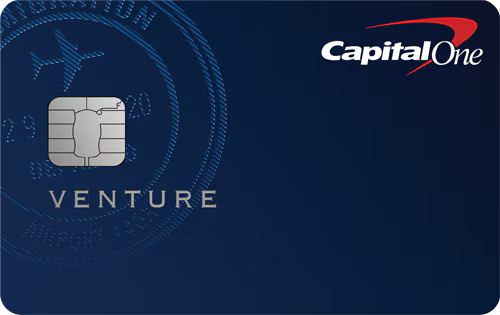
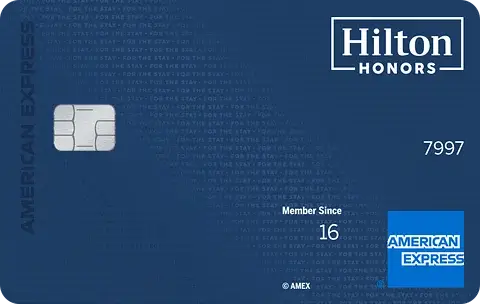
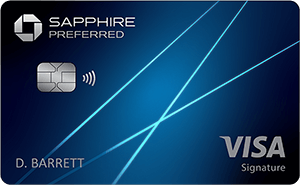
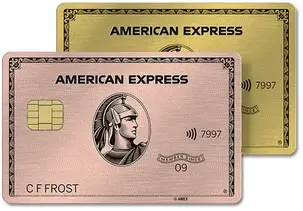

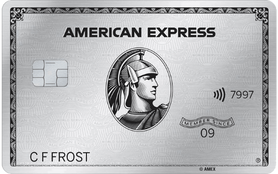
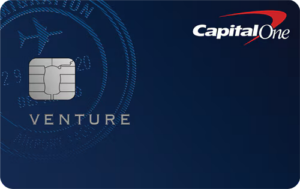
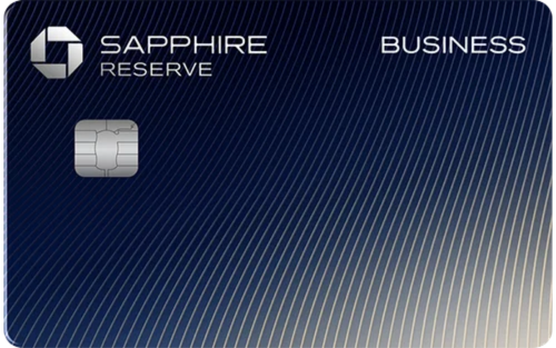
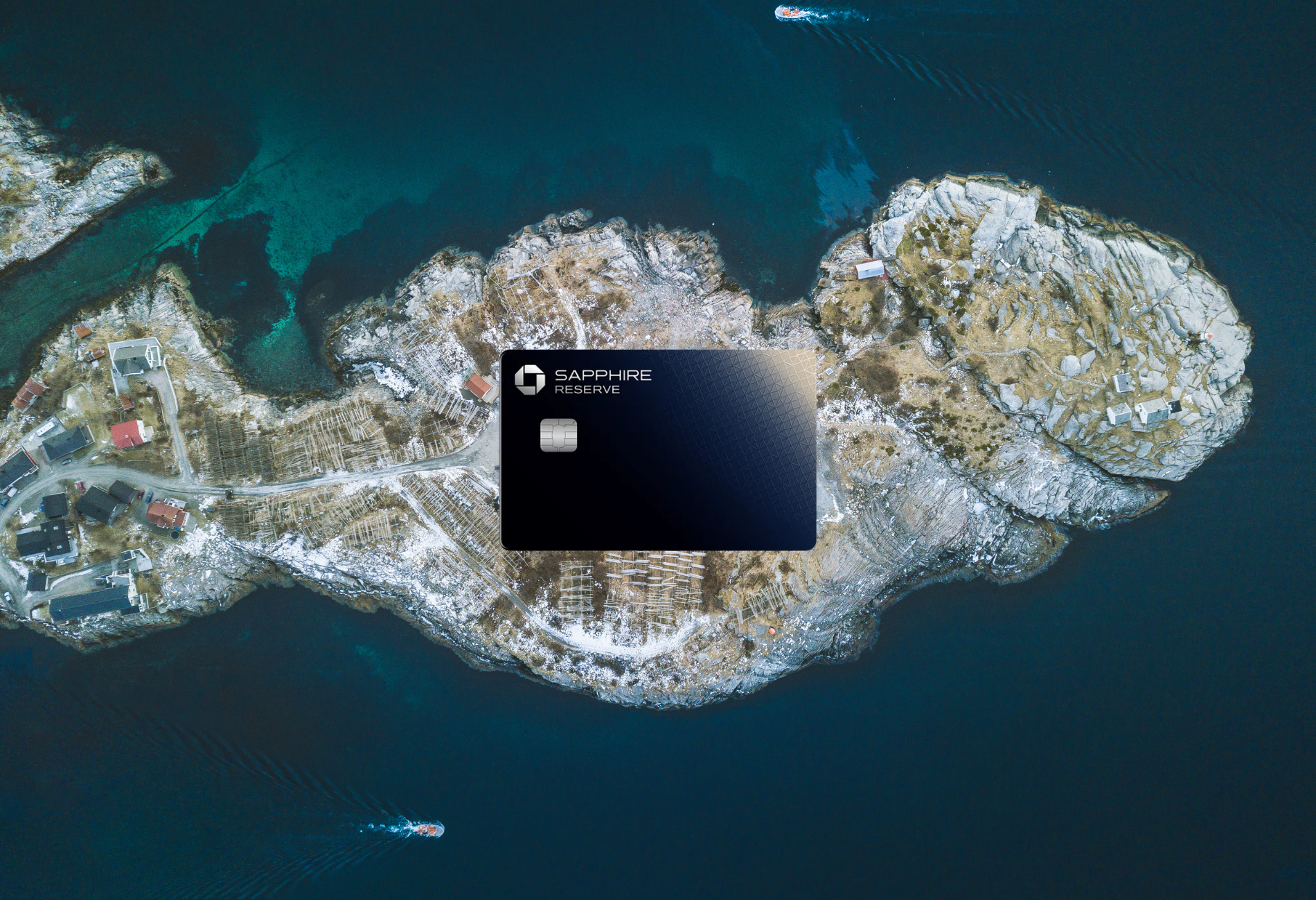
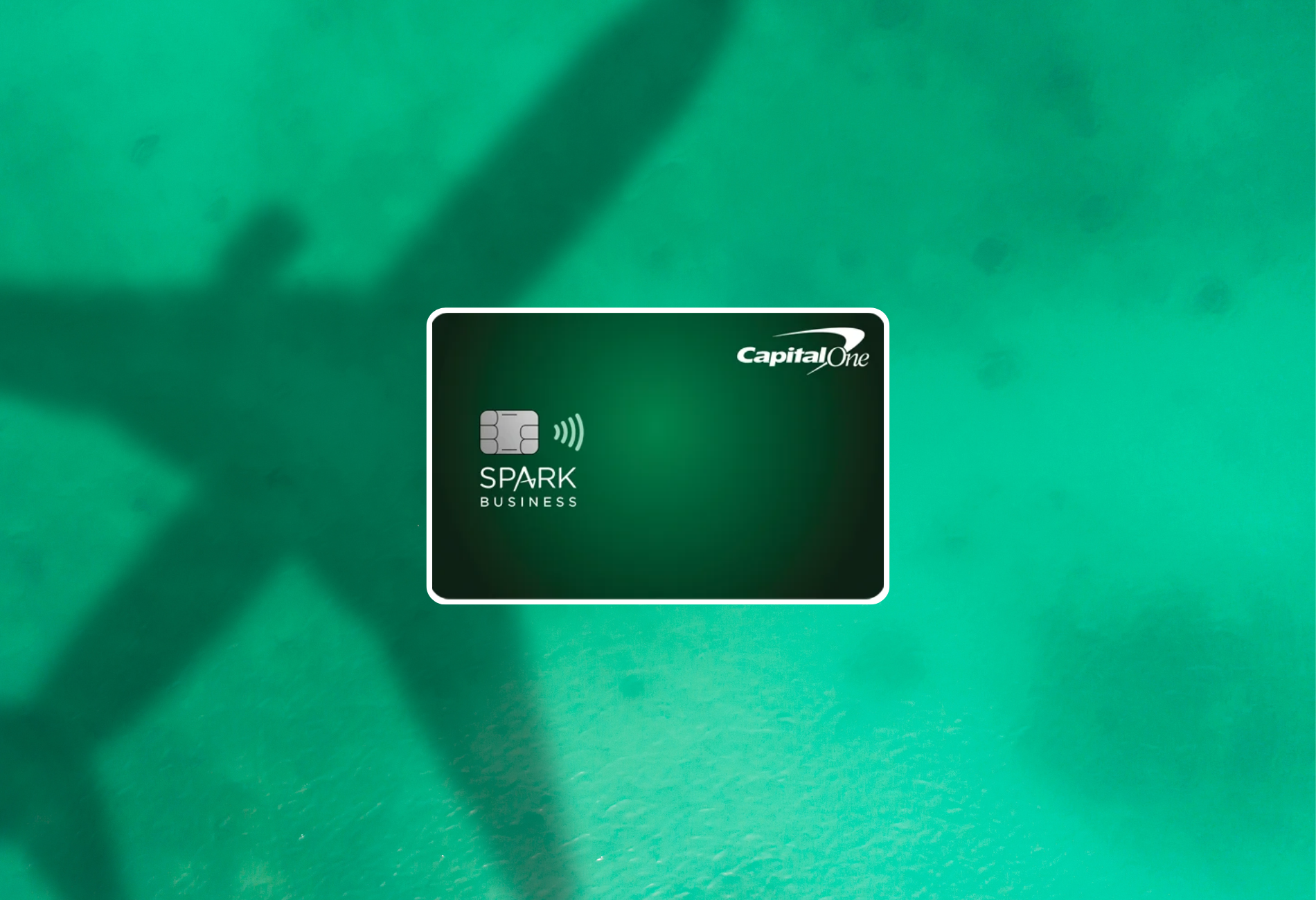
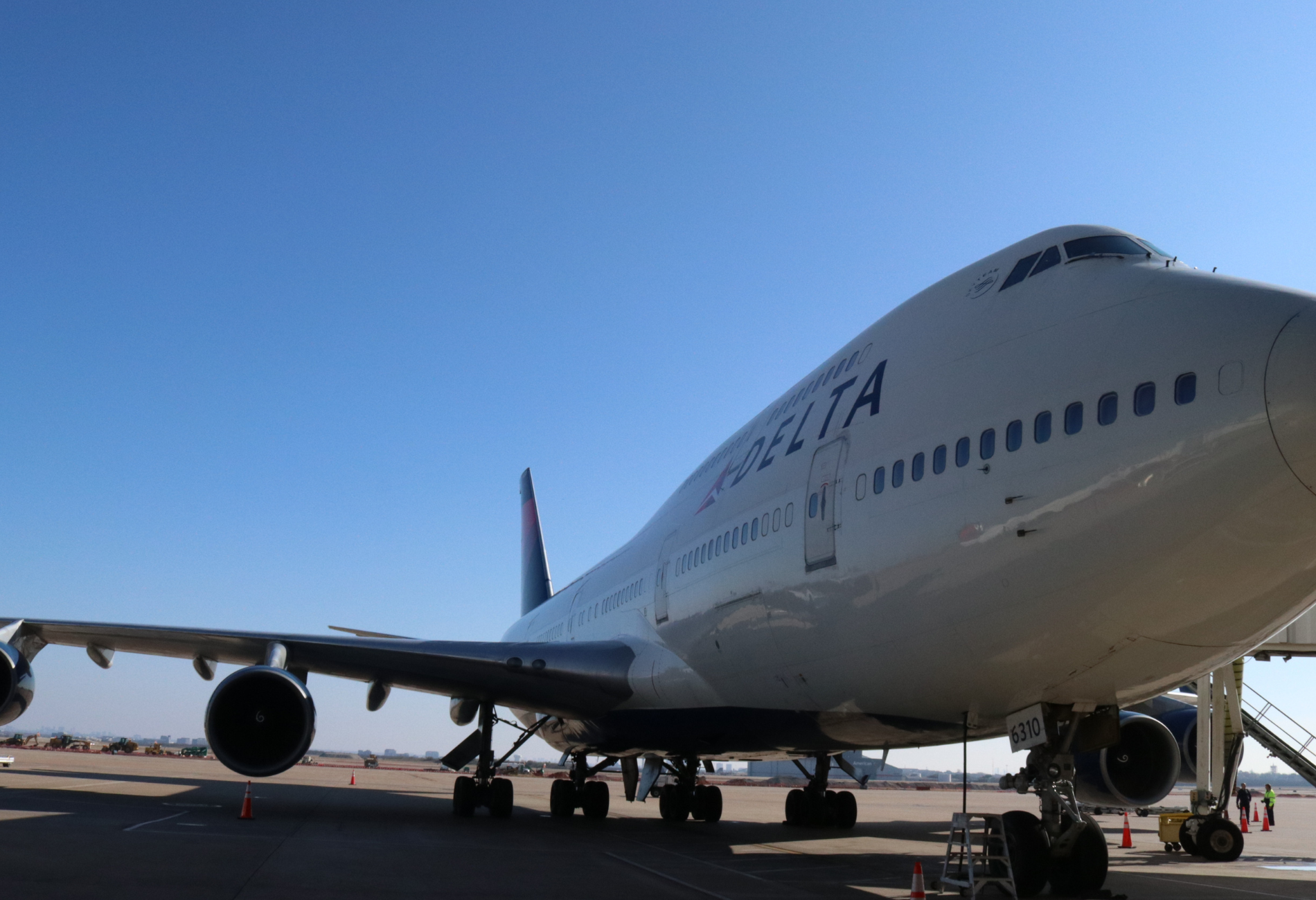
 by your friends at The Daily Navigator
by your friends at The Daily Navigator